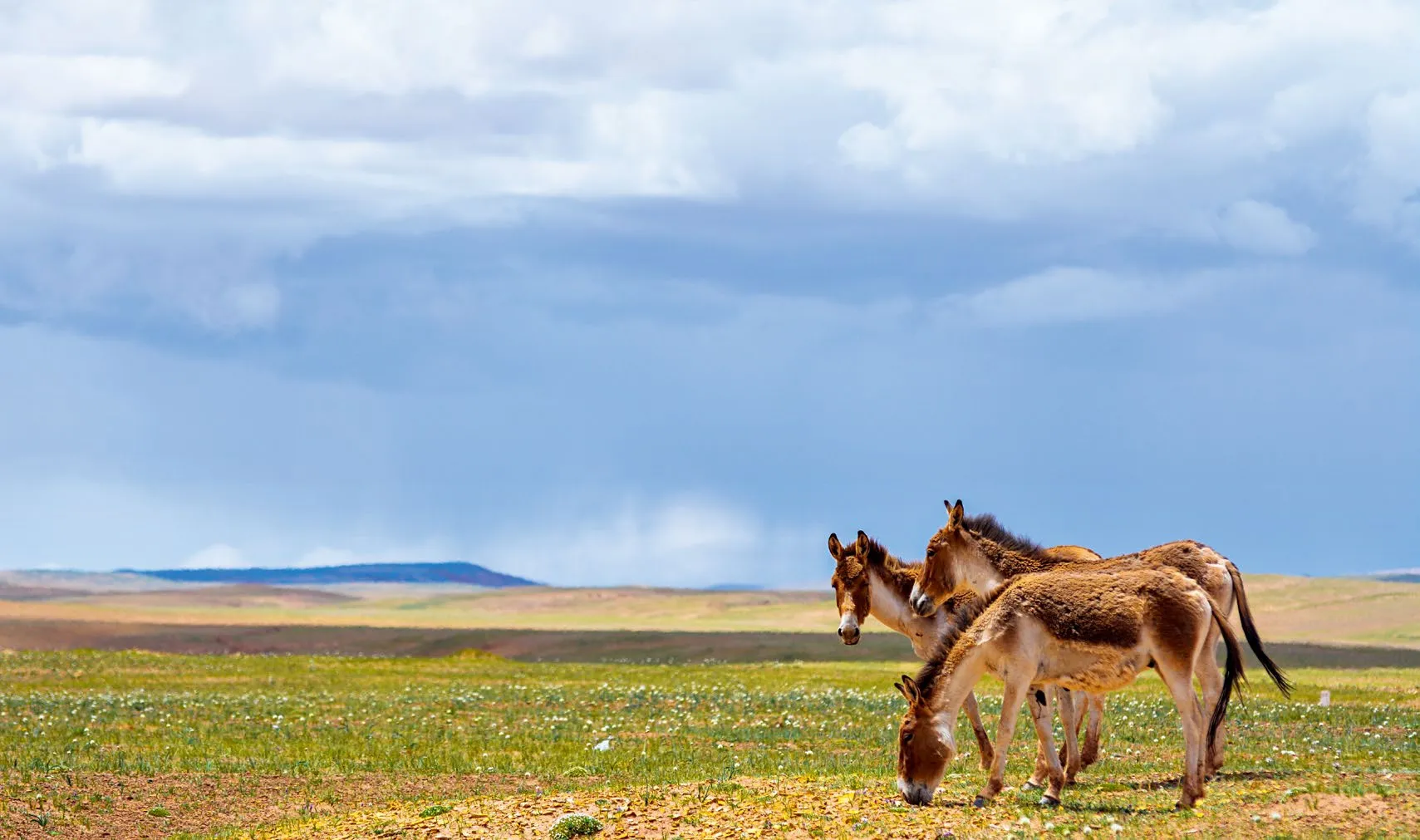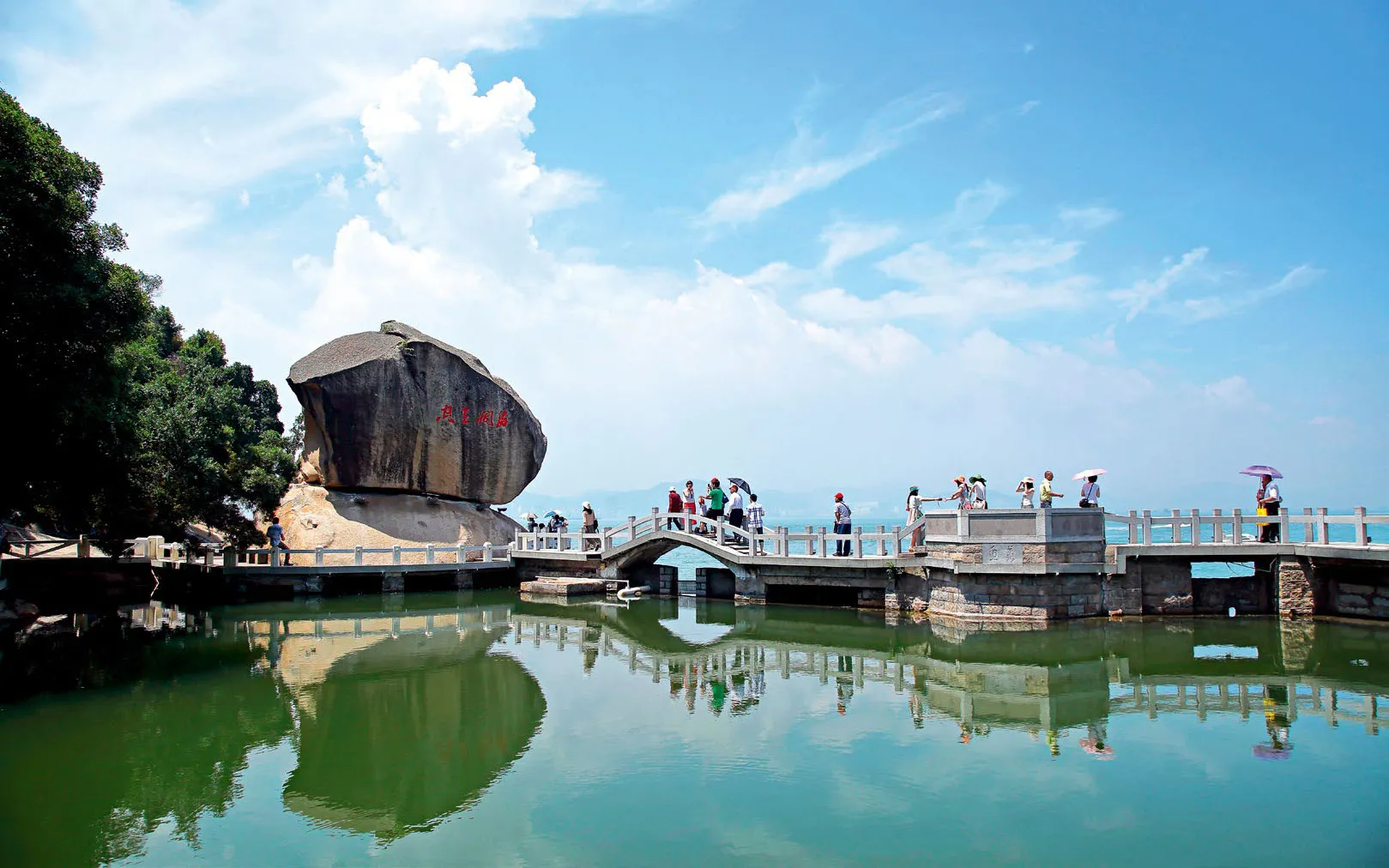WHY DOES CHINA BID FOR WORLD HERITAGE LISTINGS?
By Zhang Hongrui
WHY DOES CHINA BID FOR WORLD HERITAGE LISTINGS?
By Zhang Hongrui
The application process as well as the listings themselves can raise awareness of historically significant sites at both a local and global level

Tibetan wild donkeys, an endangered species, live in the Hoh Xil National Nature Reserve.
With Hoh Xil and Kulangsu (Gulangyu) Island recently added to the UNESCO World Heritage List, the number of China’s World Heritage sites has reached 52, topping the world. It was only 30 years ago that China’s first World Heritage sites were named. Over the years, China has gradually recognized that attaining the status of a world heritage leads to wider and higher-level protection of its cultural treasures, as well as an opportunity for global recognition of the country’s history.
Our Purpose
“Simply trying to gain more and more World Heritage Site inscriptions is not the right idea,”explained Liu Yuzhu, director of the State Administration of Cultural Heritage. Liu said that officials often put more attention on the applying-for-listing process than managing the sites themselves and falsely view site listing approval as strong work performance. Such officials need to change the way they work and pay more attention to the management, protection and inheritance of sites after they are included on the World Heritage List.
In the 1990s, without sound organizational structure and a lack of investment, historical sites at Hoh Xil on the Qinghai-Tibet plateau were under threat. Many sites were poorly managed and in disrepair. During its application for World Heritage listing, Hoh Xil’s protection work was greatly improved. Qinghai Province invested 80 million yuan (US$12 million) in improving the site and constructing management and protection facilities. The expanded Sonam Dargye protection station has also taken on a new look, drawing a large number of visitors.
“For us, the successful inscription is another significant event after the Tibetan antelope became the mascot of 2008 Beijing Olympic Games,”explained Buchon, Party secretary of the Hoh Xil National Nature Reserve Administration.“Applying for the listing brought people together to work on its protection, raising awareness of the site in the process.”
“Actually, World Heritage status also can promote the protection of intangible cultural heritage,” explained Lu Zhou, vice president of the School of Architecture at Tsinghua University and vice chairman of the International Council on Monuments and Sites (ICOMOS) China. “I took part in designing a protection and management plan for the Temple of Heaven. We found the site’s cultural legacy is as precious as the Temple itself. For example, theimperial sacrifice ritual, as well as its ceremony and sacrificial music, are every bit as important as the buildings themselves. If there were no protection for material world heritage, such intangible heritage might have been lost.”
During the process of applying for the status of World Heritage, China has introduced an advanced international protection plan as well as protection funds, so that protection and management methods comply with international standards, making the conservation of World Heritage more scientific, harmonious and sustainable.

Shuzhuang Garden on Gulangyu Island, Xiamen.
'For us, the successful inscription is another significant event after the Tibetan antelope became the mascot of 2008 Beijing Olympic Games.'
Promoting Cultural Exchange
“World Heritage sites are of great historic, artistic and scientific value,” Lu added. “Their cultural value cannot be ignored either.”
For example, he said, the Jokhang Temple and Norbulingka Garden in Tibet are well preserved. The sites not only have religious significance, but also reflect the Chinese civilization in different historical periods, diverse ethnic cultures and traditions of different classes as well as the architectural achievements of ancient China.“But how can the world learn about the history and culture of our country? A World Heritage listing is an effective way to achieve such an aim,” Lu asserted.
“During the application process, we can show our long and glorious history as well as our rich and diverse culture,” said the expert. “In addition, during the period, we need to sort, discover and rethink the essence of such sites, and then find a way to prolong their lives and allow a greater number of people to appreciate them. At the same time, it gives China a chance to display its contributions to mankind as a whole. The process also allows us to gain a better understanding of the nominated properties.”
The listing application process has indeed raised awareness of sites of historical and cultural significance among ordinary Chinese citizens.
“In the process of applyingfor-listing, we dealt with World Heritage Committee, which helped us learn a lot about management of world affairs,”Lu noted. “The process also promoted our country’s image and management levels. At the same time, the process provided a platform for countries to interact with one another. For example, on these occasions, Saudi Arabia and Israel can sit together as equals to discuss cultural heritage protection issues, showing respect to each other’s culture.”
Peng Zhaorong, a professor with the Xiamen University School of Humanities, believes that the process to have sites listed as World Heritage can raise cultural awareness on a global level. On June 22, 2014, China, Kazakhstan and Kyrgyzstan worked together to have the eastern section of the ancient Silk Road — the route linking modern-day Xi’an and the Tianshan Corridor —registered as a World Cultural Heritage site, becoming the first listing to transcend national boundaries. This success has developed the connotation of World Heritage and promoted academic studies. What’s more, the inscription has promoted cultural exchange among related countries and a greater number of developing countries have realized their dream of gaining World Heritage listings. Additionally, China and its neighboring countries as well as countries along the Belt and Road have strengthened cooperation on historical site protection, joint archaeological excavation, personnel training and other exchanges.

